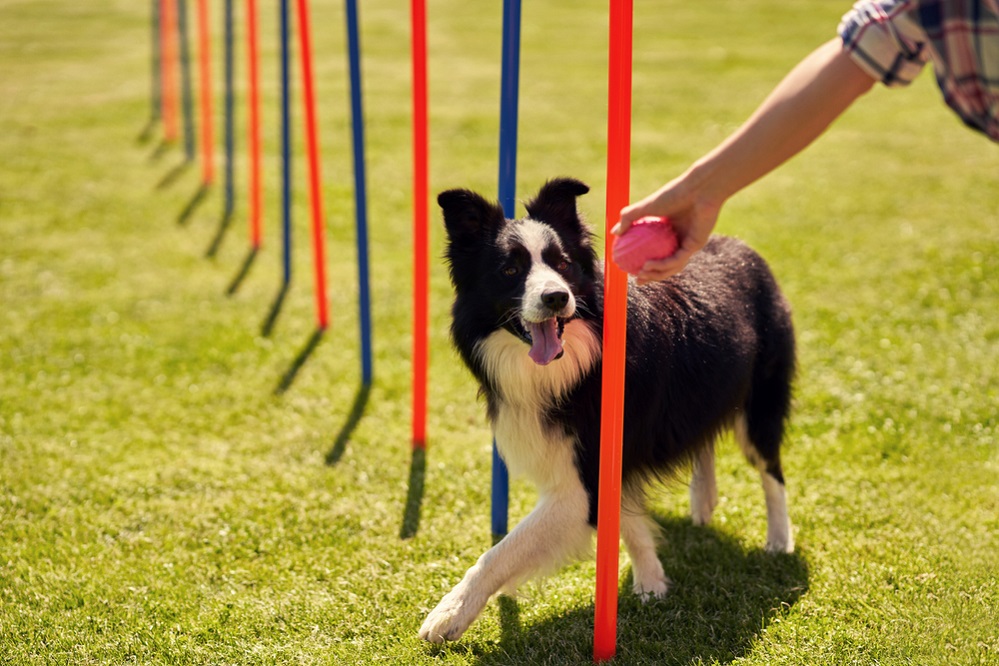Forget the stereotype of the aloof, untrainable cat! Cats are smart, curious creatures, and they absolutely can learn – often with surprising enthusiasm. Training your cat isn’t just about teaching them to do tricks (although that’s fun too!). It’s about building a better relationship with your feline friend.
With positive training methods, you can help your cat understand your expectations, which means less frustration for both of you. You can redirect unwanted behaviors like scratching the furniture, teach them to use their litter box reliably, and even have them come when called!
Learning new skills also provides mental stimulation for your cat, keeping them happy, engaged, and less likely to get bored and act out. The key to success is understanding how cats learn, being patient, and making training fun for both of you.

Cat Training Fundamentals
Understanding how your cat thinks is the first step to successful training. Let’s dive into how cats learn best:
How Cats Learn
Cats, like many animals (including humans!), learn best through what’s called operant conditioning. This means they learn by associating their actions with consequences. If a behavior leads to something good – like a yummy treat or playtime – they’re more likely to do it again.

On the other hand, if a behavior has no reward or leads to something slightly unpleasant (like a spritz of water when they jump on the counter), they’ll be less likely to repeat it.
The most effective way to train your cat is using positive reinforcement. This means rewarding the behaviors you DO want to see. Whenever your cat does something desirable, give them immediate praise, a treat, or a few minutes of play with their favorite toy.
Must-Have Tools
A few simple tools will make your cat training sessions much smoother. A clicker is a tiny plastic box with a metal tab that makes a clicking sound when pressed. This sound becomes a powerful reward marker, pinpointing the exact moment your cat does the right thing.

Find out what your cat goes crazy for – tiny bits of tuna, shredded chicken, or commercial cat treats. The tastier the reward, the more motivated your cat will be! Interactive toys like wand toys, laser pointers, and food puzzles are great for focused training sessions and provide mental enrichment.
Timing and Consistency
To help your cat make the right connections, you need to reward them the very second they do the desired behavior. This is where the clicker comes in handy! Consistency is also important. Repeating the same cues and rewarding the same behaviors regularly will help your cat learn much faster.
Essential Cat Training
Mastering some basic skills makes life with your feline friend much smoother. Let’s dive into some of the essentials of cat training.
Litter Box Success

How to litter box train a cat?
Choosing the right box is crucial for litter box success. Most cats prefer a large, uncovered litter box. If your cat is hesitant, experiment with different box sizes and locations. The type of litter matters too! Start with a fine-grained, unscented litter. Some cats have strong preferences, so you might need to try a few types.
Keeping the litter box clean is essential. Scoop it daily, and do a full change of litter at least once a week. A dirty box can lead to problems outside the box. Finally, location is key! Place the litter box in a quiet, low-traffic area of your home, away from your cat’s food and water.
Scratching Solutions
Scratching is a natural and necessary behavior for cats! They do it to mark their territory, stretch their muscles, and keep their claws in good shape. To avoid damage to your furniture, offer scratching posts of different textures (sisal rope, cardboard, carpet) and orientations (horizontal and vertical). Place them in prominent spots where your cat already likes to scratch. If you catch your cat scratching furniture, don’t yell. Calmly pick them up and place them near their scratching post. Praise them when they use it!

Staying Off Surfaces
Sometimes, you need to make surfaces like counters and tables unappealing to your cat. Removing tempting items (like plants or knick-knacks) can be enough of a deterrent. You can also try double-sided sticky tape or textured placemats to make these surfaces less desirable.
Make sure your cat has plenty of alternatives for climbing and watching the world, like cat trees or shelves. When you’re not around to supervise, a motion-activated can of compressed air or a spritz bottle filled with water can deter your cat from exploring forbidden areas.
Fun Tricks and Enrichment
Training isn’t just about obedience! Let’s explore some playful tricks and activities to keep your cat’s mind active and engaged.
Clicker Training Basics

How to clicker train a cat?
Before you start teaching specific tricks, it’s helpful to teach your cat what the clicker means. Start by simply clicking the clicker and immediately giving your cat a treat. Repeat this several times over a few short sessions. Soon, your cat will learn that “click” means something delicious is coming!
Easy Tricks
Teaching your cat tricks is a fun way to bond and keep them mentally sharp. Here are some easy ones to get you started!
To teach “sit,” hold a treat in front of your cat’s nose and slowly lure it upwards above their head. Many cats will naturally sit to follow the treat. Click and treat as soon as their bottom hits the floor!
“Target” training involves teaching your cat to touch a target (like the end of a chopstick) with their nose. Start by holding the target near their nose, clicking and rewarding them for any interest. Gradually move the target further away.
Practice calling your cat’s name and offering a treat in a quiet area to teach them to “come.” When they run towards you, click, praise them, and give the reward. Leave their carrier open with comfy bedding and treats inside to make carrier training less stressful. Reward your cat for exploring it and gradually work towards closing the door for short periods while they’re inside with tasty treats.

Mental Stimulation
Training is a fantastic form of mental enrichment for cats, but it’s not the only way to keep their minds active! Food puzzles are a great option, making your cat work for their food and encouraging their natural problem-solving skills.
Interactive toys like wand toys, chasing a laser pointer (use responsibly!), and even crumpled-up paper balls provide exercise and fun. If your cat is adventurous and enjoys being with you, try harness and leash training to explore the outdoors safely together.
How To Harness Train a Cat
Choose the right harness – look for a secure, escape-proof harness specifically designed for cats. Avoid regular collars, as they can put stress on a cat’s neck. Start by letting your cat sniff the harness and then put it on for short periods around the house. Pair harness time with treats and praise to make it a positive experience!
Once your cat is comfortable with the harness, attach a lightweight leash and let them drag it around the house under your supervision. Next, start holding the leash and following your cat around the house, offering treats and praise. Slowly begin guiding them in the direction you want to go

How To Leash Train a Cat
Before venturing outside, make sure your cat is comfortable wearing the harness and walking with the leash attached indoors. If your cat seems ready, take them to a quiet, enclosed outdoor space like your backyard for very short outings. Let them explore at their own pace.
Always use lots of treats and praise, and keep training sessions short and positive. Remember, some cats simply prefer staying indoors. Never force them if they seem scared or stressed.
Addressing Problem Behaviors
When cats act out, it can be frustrating. But before we try to fix the behavior, it’s important to understand why it’s happening.
Understanding the Cause

Cats don’t misbehave out of spite! When they’re doing something unwanted, it’s important to look for the root cause of the behavior. A sudden change in behavior, like going outside the litter box or increased aggression, could signal a health problem. Always rule out a medical issue with your veterinarian first.
Is your cat lacking in playtime, mental stimulation, or engaging things in their environment?
Enrichment is key to preventing boredom-related problem behaviors. Changes in the household, new pets, or other disruptions can cause cats to act out or become withdrawn due to stress or anxiety. Things like scratching or jumping on counters are normal cat behaviors – we need to provide appropriate outlets for those natural instincts.
Redirection Over Punishment
Yelling at your cat or using physical punishment will only damage your relationship and might make the problem worse. Instead, focus on redirecting unwanted behaviors to more appropriate ones.

Is your cat scratching the furniture?
Don’t just say “no!” Provide awesome scratching posts right next to the problem areas. If they enjoy counter surfing, offer high perches as alternatives and make countertops less appealing with sticky mats or deterrents. If your cat gets the night-time zoomies, schedule regular, vigorous playtime in the evening to tire them out before bedtime.
Seeking Professional Help
For serious behavior problems like aggression, destructive behavior, or litter box avoidance that doesn’t improve with home training, it’s time to seek professional help.
Your veterinarian can address any underlying medical issues and offer behavior advice. A certified cat behavior consultant can analyze your cat’s behavior, identify the root of the problem, and create a personalized training plan.
15 Interesting Facts About Cat Training

- A significant percentage of cats are surrendered to shelters due to preventable behavior problems.
- Positive reinforcement training methods are proven to be the most effective way to train cats.
- Cats are capable of learning a wide range of tricks, from simple commands to agility-like skills.
- Training sessions should be short and frequent – cats have short attention spans!
- Consistency is crucial in cat training. Rewarding the same behaviors every time helps your cat understand what you want.
- Clicker training is a powerful tool that can speed up the learning process for cats.
- Cats learn best when they are relaxed and feel safe. Create a calm training environment.
- Food puzzles and interactive toys provide important mental stimulation for cats, reducing boredom and problem behaviors.

- Early socialization helps kittens grow into confident and well-adjusted adult cats.
- Scratching is a normal and healthy behavior for cats. Providing appropriate scratching surfaces is essential.
- Understanding your cat’s natural instincts is key to successful training and preventing problem behaviors.
- Litter box issues are often caused by stress, medical problems, or a dislike of the litter type or box placement.
- Training can help reduce anxiety in cats, leading to a calmer and happier pet.
- Even senior cats can learn new things! Mental stimulation is important for cats of all ages.
- Some breeds of cats are naturally more outgoing and may enjoy learning more complex tricks or behaviors.
FAQs
Is my cat too old to learn?
Cats can learn at any age! Older cats might take a little longer, but with patience and positive reinforcement, they can absolutely learn new things.
How long do training sessions need to be?
Keep it short and sweet! Cats do best with multiple short sessions (5-10 minutes) throughout the day, rather than one long session.
My cat ignores treats, what can I do?
Every cat is different. Experiment with different types of treats (tuna, chicken, commercial treats) until you find something your cat loves. Some cats are even motivated by play!
Can training help with aggression?
Sometimes, aggression stems from fear or anxiety. Training can help build your cat’s confidence. For serious aggression, it’s essential to consult a behavior specialist.
Why does my cat meow excessively?
There could be many reasons – boredom, hunger, pain, or seeking attention. Pay attention to when the meowing happens to try to identify the cause.
How can I stop my cat from scratching the furniture?
Provide appealing scratching posts in various locations, especially near where your cat likes to scratch. Redirect them to the scratching post whenever they target the furniture.
My cat won't use the litter box – help!
First, rule out a medical issue with your vet. Then, consider litter type, box location, cleanliness, and any recent changes in your cat’s environment that might be causing stress.
Final Words
Training your cat isn’t just about teaching them fancy tricks (although that’s fun, too!). It’s about building a stronger bond, understanding your feline friend better, and making life together more enjoyable for both of you. Remember, cats are intelligent and capable learners! With positive reinforcement, patience, and a playful approach, you’ll be amazed at what your cat can achieve.
Don’t be afraid to get creative! Teach your cat to fetch, give high fives, or even walk on a leash. The possibilities are endless! The more you train and engage with your cat, the deeper your relationship will become. If you run into challenges along the way, don’t hesitate to seek help from your veterinarian or a cat behavior specialist. With the right guidance and support, you and your cat can enjoy a lifetime of happy companionship.













